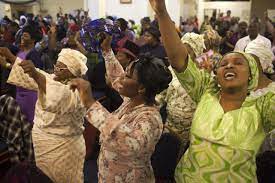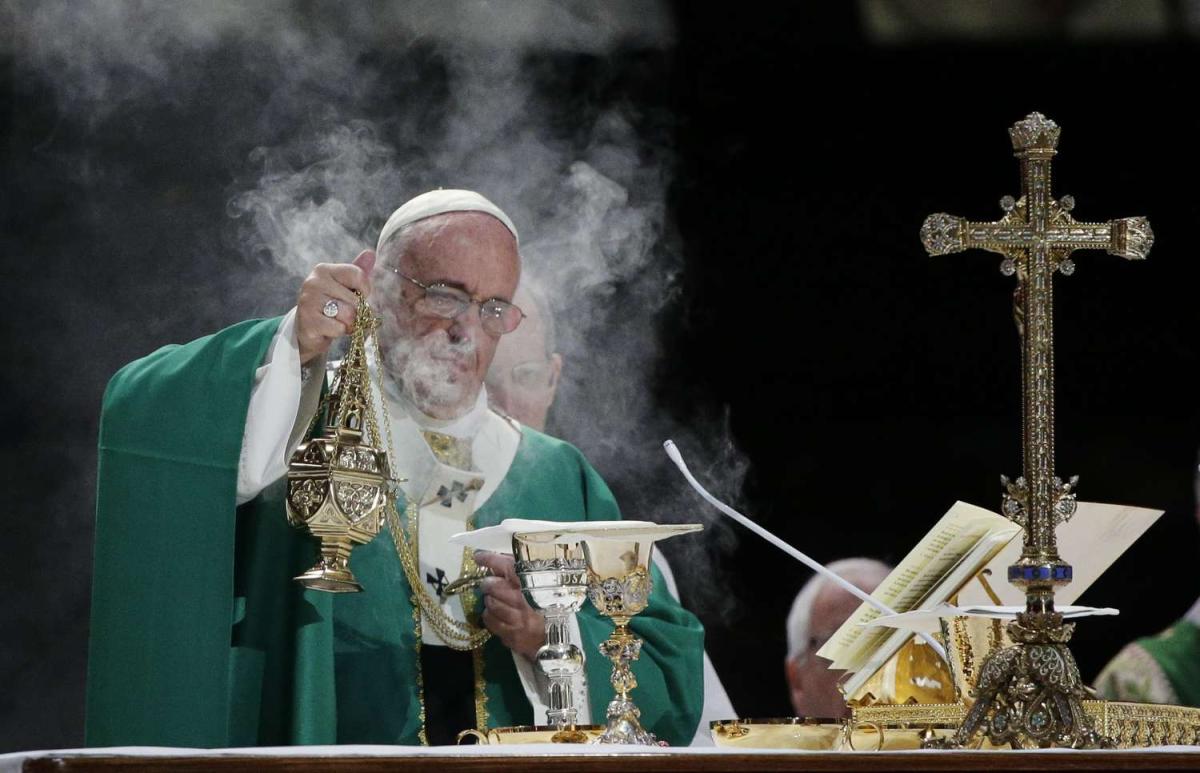
Putting aside the back and forth of the contemporary worship discussion for a moment, I want to shine a light on what might be a hidden force behind the many criticisms of emotionally rich, contemporary worship. The voices I’ve been countering are first and foremost desperate to take the emotion out of worship, as if human feeling were somehow unholy, and we, God’s people, are unable to resist being manipulated by music that stirs the heart. The assumption seems to be that communal expressions of strong feeling towards God are manipulated by those leading, and that we’d be better off sticking to liturgy, or even silence.
Where does this trajectory come from? I hate to say it, but it seems there might be a racist element at play. Not overt, conscious racism, but the more pernicious kind – institutional, buried beneath traditions, attitudes, and culture. It is harder to identify, and even harder to root out.
To explore this properly we need to start with the Azusa Street revival of 1906 in Los Angeles, where the Holy Spirit was poured out as he was at Pentecost, accompanied by miracles, signs, and charismatic gifts. There have been numerous revivals of the Pentecostal gifts ever since the time of Christ, all of which have been emotional, noisy, and resulting in the salvation of many – you cannot encounter Christ without emotion, whether that be reverence, gratitude, or any other sincere response. If no emotion flows, the encounter itself is false. Find me a person who stood before God in the Bible, recognising him as the Lord, and felt nothing…
These historic revivals of Pentecostal gifts and power were all tangible, transformative encounters with the Divine. For those who are interested, I suggest researching early Christian monastic communities, the Great Christian Mystics, the Anabaptists (as part of the Reformation), the Moravians, the Methodist revival (under John Wesley), the Welsh Revival, the Great Awakenings, and the Cane Ridge Revival, among others, to understand the consistent nature of true renewal.
Charles G. Finney, a leader in the Second Great Awakening who was touched by the Holy Spirit, wrote in his memoirs:
“Without any expectation of it, without ever having the thought in my mind that there was any such thing for me, without the recollection that I had ever heard the thing mentioned by any person in the world, the Holy Spirit descended upon me in such a manner that seemed to go through me, body and soul. I could feel the impression, like a wave of electricity, going through and through me. Indeed it seemed to come in waves of liquid love; for I could not express it in any other way. It seemed like the very breath of God. I can recollect distinctly that it seemed to fan me, like immense wings. No words can express the wonderful love that was shed abroad in my heart. I wept aloud with joy and love; and I do not know but I should say I literally bellowed out the unutterable gushings of my heart. These waves came over and over me, one after the other, until I cried out, “I shall die if these waves continue to pass over me.” I said, “Lord, I cannot bear any more;” yet I had no fear of death.”
Based on Finney’s language, his experience of the Lord exceeds my own, but not greatly. This kind of divine encounter is what I and many others know in times of deep worship, or when praying. I wonder what those who wish to erode the stirring up of emotions in worship would make of such encounters – surely they have never known them!
When the Holy Spirit was poured out at the original Pentecost, the Church was born. That church immediately began doing the work of Jesus – meeting the needs of the suffering through miracles, healing, preaching, and expanding the believing community. They were emboldened, empowered, and full of the supernatural light of Jesus. We have always been called to operate thusly, but the Church oscillates between rebellion against the Spirit and recall to the Spirit, or at least it has done since the time of Christ. If only we were faithful enough to stay in the river instead of wresting control from God’s hands.
The Birth of the Pentecostal Movement
And so we reach William Joseph Seymour, the African-American preacher who was central to the Azusa Street Revival of 1906, which in turn birthed the Pentecostal and Charismatic movements. Seymour was the second of eight children born to emancipated slaves, raised in extreme poverty in Louisiana.
There is no separating the Azusa Street Revival from slavery, or the faith and fervour of those who’d lived through it – neither in their worship nor in their preaching. This revival touched the world, flooding the globe and changing entire continents forever. Pentecostalism became a mass movement across the southern areas of Africa as a result of what happened in Azusa Street, and to this day, Pentecostalism has detectable roots in emancipation and the faith of black believers.
Though not specifically or exclusively a black movement, anyone who claimed Pentecostalism isn’t intimately connected to the black community has never been to such a church, or at least not in a multicultural society. After being filled with the spirit, I spent years in a traditional Pentecostal church in Nottingham, where at least half the congregation was black and we sang wonderful old Gospel hymns, praising God noisily and with joy!
The worship music we sang, which on occasion was referred to as a Pentecostal knees-up, had Gospel roots. Gospel music is the child of ‘African-American spirituals’, which used to be known as ‘Negro Spirituals’ – deeply emotional music sung by believers while held captives as slaves in the American South. This is faith music – music to inspire, to motivate, to galvanise! Think of the titles of such songs:
Swing low, sweet chariot
I’ve been in the storm so long
Ev’ry time I feel the Spirit
Wrestle on, Jacob
Oh Freedom
Deep River
Jesus on the waterside
Wait ’till I put on my crown : Oh, yes! Oh, yes!
These are songs of profound emotion and faith, anticipating Heaven and freedom in the midst of terrible suffering and bondage. This music is as deeply human as it is divine – heart and faith intertwined, and all eyes are on Jesus.
As such, Gospel music is most definitely a black art form in its origins, much like blues and jazz, but it is sacred rather than secular. Even Wikipedia understands that Gospel music is a black art-form, connected to black history and the faith of black people:
‘Gospel music can be traced to the early 17th century. Hymns and sacred songs were often repeated in a call and response fashion, heavily influenced by ancestral African music. Most of the churches relied on hand-clapping and foot-stomping as rhythmic accompaniment.
Black gospel music, often called gospel music or gospel, is a genre of African-American Christian music. It is rooted in the conversion of enslaved Africans to Christianity, both during and after the trans-Atlantic slave trade, starting with work songs sung in the fields and, later, with religious songs sung in various church settings, later classified as Negro Spirituals (which shaped much of traditional Black gospel).
The Pentecostal revival that began in Azusa Street in California lost some of its vitality in the mid to late 20th century due to legalism, but its blessings were picked up and run with by the Charismatic Movement, which began in the latter decades of the 20th century. Have no doubt – the Pentecostal and Charismatic movements are instalments of the same revival, but the later version broadened the flow of the Gifts of the Spirit to the wider Evangelical community, which meant reaching more deeply into white, Christian communities and denominations – an inclusive move of God, who always works to bring all things and all people into unity under Christ.
Prejudice dressed up as a warning
Here’s the rub – what we now call contemporary worship has grown from the Gospel music root – intimate, faith-filled, devotional words set to music that stirs the heart. The voices speaking against contemporary worship refer to such worship as played in a rock or pop style, while carefully avoiding any acknowledgement of its true root, which is Gospel music.
These comparisons to rock or pop are lamentably short-sighted. Very little in the contemporary worship bracket sounds anything like rock! Ask any true devotee of rock music – contemporary worship lacks the punch and leading edge of rock, which is more about rebellion that submission. And pop? Nonsense! The use of emotionally laden music with spiritual words has more in connection with Gospel and Native-American Spirituals than Taylor Swift’s airy, musical farts – comparing the sacred to the secular and calling them the same thing is a huge miss. The lyrics of contemporary worship songs show us exactly what they are about – following Jesus. They might not be in someone’s preferred style, but the focus is fundamentally spiritual. Contemporary worship is Gospel Music, arising from the Charismatic Revival, which in turn grew from the Pentecostal revival. These criticisms of emotion in worship are the rejection of the culture of intimate, powerful worship, flowing from intimate, powerful divine encounters and outpourings which changed the world.
What’s the agenda?
Consider what these anti-contemporary worship voices are criticising:
- Emotion in worship
- Distracting levels of noise
- Theologically ‘shallow’ songs
- The unifying of gathered, fervent voices and hearts in praise
What are they in favour of?
- Liturgy
- Silence
- Intellectual, theological discussion
What’s the outcome here? A quiet, respectable practice of faith focussed on dry, theological discussions and liturgy instead of emotional, connected worship? Countryside walks as a spiritual discipline, and intellectual, theological conversation in comfortable living rooms, sipping hot beverages?
It seems to me the form of Christianity being sought-after is an attempt to whitewash devotion – make it quieter, more cerebral, less challenging, more comfortable. It reminds me of my childhood in an ex-brethren church, where the intellectual male was king and the Holy Spirit was kept at the door.
I have no interest in this softly spoken version of Christianity. By all means, if that is your preference, go for it, but some of the voices raised against contemporary worship are not expressing a preference – they are expressing a clear rejection of such worship, and even arguing that the use of stirring music in worship cannot be of God. Liturgy is fine, if you like that sort of thing, but it’s just an option from a wide array of preferences for worshippers. No doubt there are issues with contemporary worship, but not those identified, in my view.
As for me, I want the fire of God and nothing less! I want true devotion, divine encounters, changed lives, healings, miracles, and the outpouring of charismatic gifts as seen throughout the ages, every time a community set its heart on seeking the Lord. I want to draw from the blessings that flowed at Azusa Street in 1906, and drink deep from the Charismatic outpouring of the late 20th Century. Most of all, I pray for a fresh renewal that transforms Christ’s Church and makes it fit for purpose.
Can I get an Amen?












